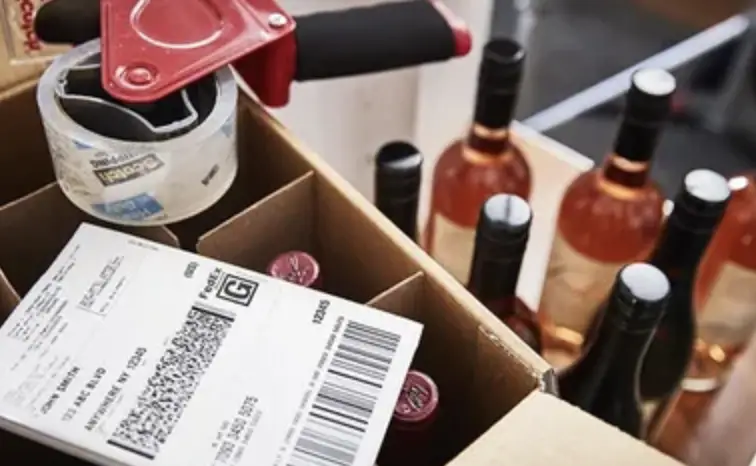
Safely Sending Spirits: A Guide to Packaging Alcohol for Shipping
Shipping alcohol can be a delicate process, as it requires careful packaging to ensure the contents arrive intact and comply with legal regulations. Whether you’re sending a special bottle of wine to a friend or shipping a collection of spirits to a customer, proper packaging is crucial. In this blog post, we will provide you with an in-depth guide on how to package alcohol for shipping, ensuring the bottles are protected and the shipment meets all necessary legal requirements. Let’s dive in!
- Know the Legal Restrictions:
Before shipping alcohol, familiarize yourself with the legal restrictions and regulations of the origin and destination locations. Different countries, states, and carriers have varying rules regarding the shipment of alcohol. Ensure you comply with age restrictions, licensing requirements, and any necessary permits. It’s important to do thorough research and consult relevant authorities to ensure you are shipping within the legal boundaries.
- Choose the Right Packaging Materials:
To safeguard the bottles during transit, it’s essential to choose the appropriate packaging materials. Consider the following options:
- Sturdy Shipping Box: Select a strong and durable shipping box made of corrugated cardboard that can withstand the rigors of transportation. Ensure the box is an appropriate size to securely hold the bottles and provide ample space for cushioning materials.
- Internal Cushioning: Use adequate internal cushioning to protect the bottles from impact. Options include bubble wrap, packing peanuts, air pillows, or foam inserts. Wrap each bottle individually to prevent them from bumping into each other.
- Sealing Tape: Securely seal the shipping box using strong packing tape. Reinforce the corners and edges to prevent accidental openings during transit.
- Bottle Protection:
To minimize the risk of breakage, take extra precautions to protect the bottles themselves:
- Bottle Sleeves or Wine Skins: Slip each bottle into a protective bottle sleeve or wine skin. These padded sleeves provide an additional layer of protection against impact and help absorb shocks.
- Bottle Separation: Ensure the bottles are separated from each other within the shipping box. Use dividers or cardboard inserts to prevent them from clinking together during transportation.
- Leak-Proof Packaging:
To prevent leakage and damage to other items, employ leak-proof packaging methods:
- Sealed Caps or Corks: Ensure that the bottles are tightly sealed with their original caps or corks. Verify that no leakage or seepage is present before packaging.
- Plastic Bags: Place each bottle in a sealed, leak-proof plastic bag. This additional layer of protection helps contain any potential spills or leaks and prevents damage to other items if a bottle were to break.
- Sealed Plastic Wrap: Wrap the entire bottle tightly in plastic wrap, providing an added barrier against leaks. Secure the plastic wrap with tape to keep it in place.
- Labeling and Documentation:
Properly label the package to ensure safe handling and compliance with shipping regulations:
- Fragile Label: Affix a “Fragile” label to the package to alert handlers to exercise caution during transit.
- “Contains Alcohol” Label: Clearly indicate that the package contains alcohol to comply with shipping regulations. Use a label or sticker that meets the carrier’s requirements.
- Required Documentation: Include any necessary documentation, such as shipping labels, customs forms, or permits, as required by the shipping carrier and destination country’s regulations.
- Choose a Reliable Shipping Carrier:
Select a reputable and experienced shipping carrier that specializes in handling alcohol shipments. Ensure the carrier is authorized to ship alcohol and has a track record of safe and reliable transportation. Consider using carriers that offer specialized alcohol shipping services to ensure the process is handled with care.
- Insurance Coverage:
Consider purchasing shipping insurance to protect the value of your alcohol shipment against loss or damage during transit. Evaluate theinsurance options provided by the shipping carrier or consider third-party insurance providers specializing in alcohol shipments. Review the terms and coverage limits to ensure you have adequate protection.
- Legal Considerations:
When shipping alcohol, it’s crucial to comply with legal requirements:
- Age Verification: Verify the age of the recipient to ensure they meet the legal drinking age requirements. Most carriers require the recipient to provide proof of age upon delivery.
- Licensing and Permits: Obtain any necessary licenses or permits required for shipping alcohol. Familiarize yourself with the laws and regulations governing the shipment of alcohol in the origin and destination locations.
- Restricted Locations: Be aware of any restricted or prohibited areas where the shipment of alcohol may be restricted or banned. Research and comply with all relevant regulations to avoid legal issues.
Conclusion:
Shipping alcohol requires careful attention to packaging and legal considerations to ensure a safe and compliant delivery. By following these guidelines, you can package alcohol securely, protect the bottles from damage, and adhere to legal requirements. Remember to research and comply with the specific regulations of the origin and destination locations to ensure a smooth shipping process. With the right packaging materials, proper labeling, and reliable carrier, you can confidently send your alcohol shipments, knowing they will arrive safely and legally. Cheers to sharing the joy of fine spirits with others, even from afar!






